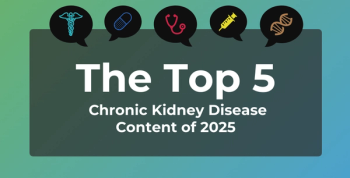
Transcranial Direct Current Stimulation Use in Patients With MS
The painless procedure is still in its experimental stages; however, it is inexpensive and safe, and the equipment is portable.
Patients with multiple sclerosis (MS) exhibit higher rates of fatigue (92%) and depression (24%) compared with the general population, and neuropathic pain occurs at a rate 5 times greater, according to research recently published in Brain Stimulation.
These 3 symptoms, what the authors termed a “symptom cluster,” are interrelated in the disease course of MS, and having a symptom cluster provides an efficient target for treatment determination. Therefore, the authors speculate, relieving pain symptoms could initiate a chain reaction: Addressing pain improves fatigue and depression levels, which improves overall quality of life.
Their treatment of choice, to this point not studied in patients with this symptom cluster, was transcranial direct current stimulation (tDCS). According to
TDCS involves electrodes attached to the head that deliver a continuous, but low current. The anode stimulates neuronal activity while the cathode reduces it. For this study, six patients with relapsing-remitting MS, with an average age of 46.7 years, underwent randomized treatment (tDCS or sham treatment) for 5 days. At their first study-associated visit, they completed 3 questionnaires: the Fatigue Severity Scale (FSS), visual analog scale for pain (VAS), and Beck Depression Inventory. Leg strength, determined by flexion and extension movements, was used to indicate fatigue levels, with the weaker leg being used for the fatigue test.
The actual tDCS treatment lasted 20 minutes, starting at 0 mA on day 1 of each cycle and increasing over 20 minutes to 2 mA before returning to 0 mA once again. The sham block only differed in that after reaching 2 mA, the electrodes (1 each where indicated for the primary motor cortex of the weaker leg [the anode] and the opposite side of the forehead [the cathode]) of were essentially turned off. On days 2 through 4, everyone received tDCS, and on the final day, they repeated the leg strength test and questionnaires from the first day.
TDCS improved knee fatigability and perceived fatigue and pain levels, while depression levels remained unchanged. The sham treatment provided no noticeable improvements. The authors believe this indicates their results are specifically related to tDCS, echoing similar positive results from previous studies performed among patients with MS to test improvements in their fatigue and neuropathic pain levels.
“Our study expands these findings and showed improvements in performance fatigability, perceived fatigue [FSS], and pain [VAS] after 5 daily sessions,” they stated. “TDCS reduced pain in people with MS in our study. It has been reported that tDCS causes polarity-dependent shifts of the resting membrane potential and might consequently change neuronal excitability at the site of stimulation and functionally connected areas.”
Lastly, despite the authors' claim that tDCS has been shown to improve depressive symptoms, one reason they selected tDCS for this symptom cluster was the belief that similar results were not seen in their patient-subjects because they may not have had depression.
Additional studies are needed in larger patient populations with more severe disease to truly test both the long- and short-term effects of tDCS, and its usefulness, in patients with MS.
Reference
Workman CD, Kamholz J, Rudroff T. Transcranial direct current stimulation (tDCS) for the treatment of a multiple sclerosis symptom cluster. Brain Stimul. 2020;31(1):263-264. doi: 10.1016/j.brs.2019.09.012.
Newsletter
Stay ahead of policy, cost, and value—subscribe to AJMC for expert insights at the intersection of clinical care and health economics.









































